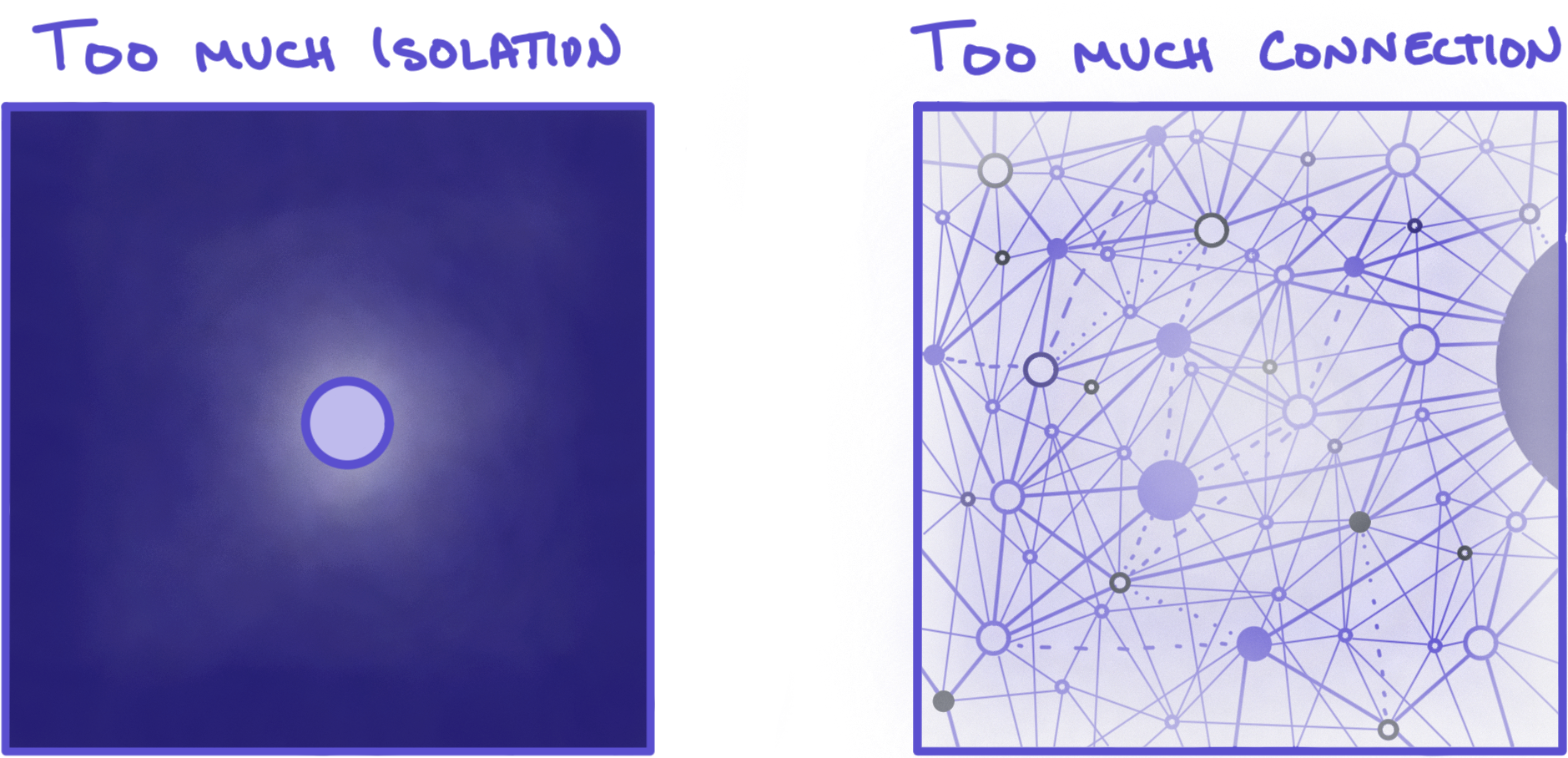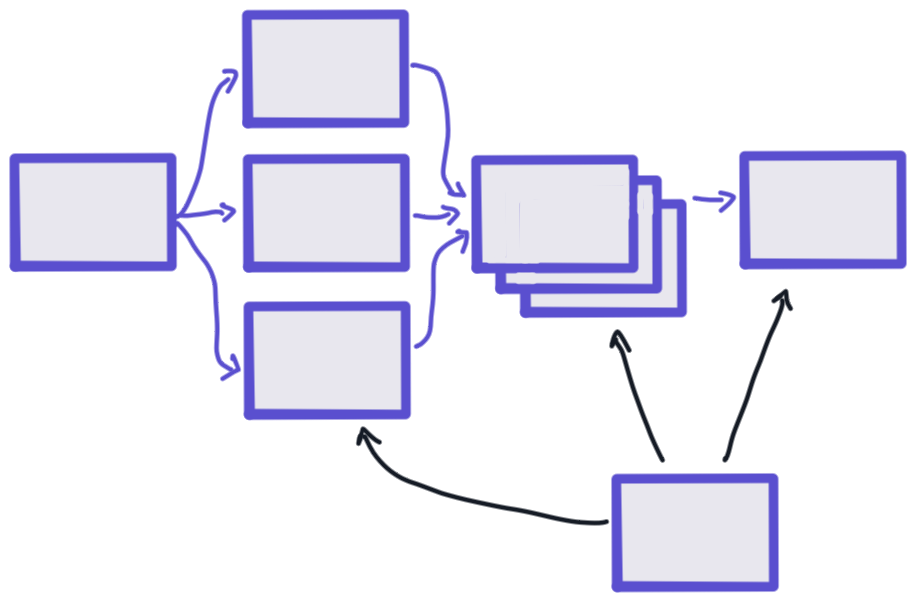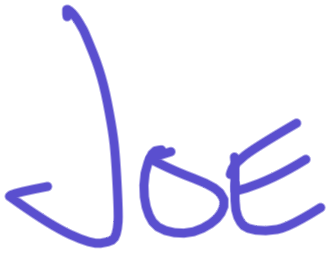Condition 008
Making beautiful components
without understanding their purpose
risks creating beautiful irrelevance.
I had a conversation with someone struggling to balance the boundaries and wholeness of the diagrams they were making to describe the design of a software system. When she diagrammed isolated chunks of the system, important threads were not coming through; so she added in all the missing connections and factors, but then her team was overwhelmed and confused. It was a catch twenty-two.

In any kind of making, there is an allure and an accessibility to diving straight into crafting individual parts. It feels productive to just get started on something, and most professional training focuses on how to make the parts. Plus, in many cases we have a good-enough sense of what purpose a part serves without being explicit about it. But when we’re working on something interconnected and new to us or with collaborators, the implicit sense of purpose and connection is not good enough. Maybe you’ve found yourself in a situation like this: you start with what feels like mental clarity—enough to get excited about making progress—but as you dive into the details, you lose sight of the purpose and your overarching goal. It feels like progress before you start, but you quickly feel like you’re wasting time.

However, when we are able to visualize how the parts work together to create a whole, we are able to ensure that each component is created purposefully. Doing this before we start allows us to know what sequence to work in and also when we are done with the task.

When we know exactly what each piece needs to contribute to the desired outcome, we can see the dependencies: what must happen first and what can wait. We recognize natural completion points rather than allowing endless tweaking. We also are able to express a vision of what we’re working for that others can align around and help us accomplish.
Where in your work are you perfecting an artifact without knowing exactly what you need from it? What would change if you sketched an initial sense of how the parts will come together to inform the whole?
Thanks for reading,


Confident Moves
Try this in less than 10 minutes:
Purpose Mapping
Pick something you’re working on with 3-4 pieces that need to work together.
I chose a book I’m working on, here is my example.
- Write your overall desired outcome/goal at the top of the page.
This should focus on the outcome you are looking for that is driving the necessity for the various parts. - List the pieces that you have.
It might take longer if you don’t know what the pieces are yet. - For each piece, create a simple three-part layout:
- Draw a box in the center and write the piece’s purpose inside.
Answer: “Why does this need to exist?” - To the left, write what needs to exist first (dependencies).
What inputs, from other people or work, are needed to do this? - To the right, write what “done” looks like for this piece.
How do you know when to stop? What is good-enough?
- Draw a box in the center and write the piece’s purpose inside.
- Repeat for each piece, spacing them down the page.
You can also put each on a separate note card; this shouldn’t take a ton of room or time. - Step back and look at the whole page.
Which purposes are clear? Which are less clear?
Which pieces feel like “extras” or “nice-to-haves” versus “must haves”?
Does it feel like anything is missing?
